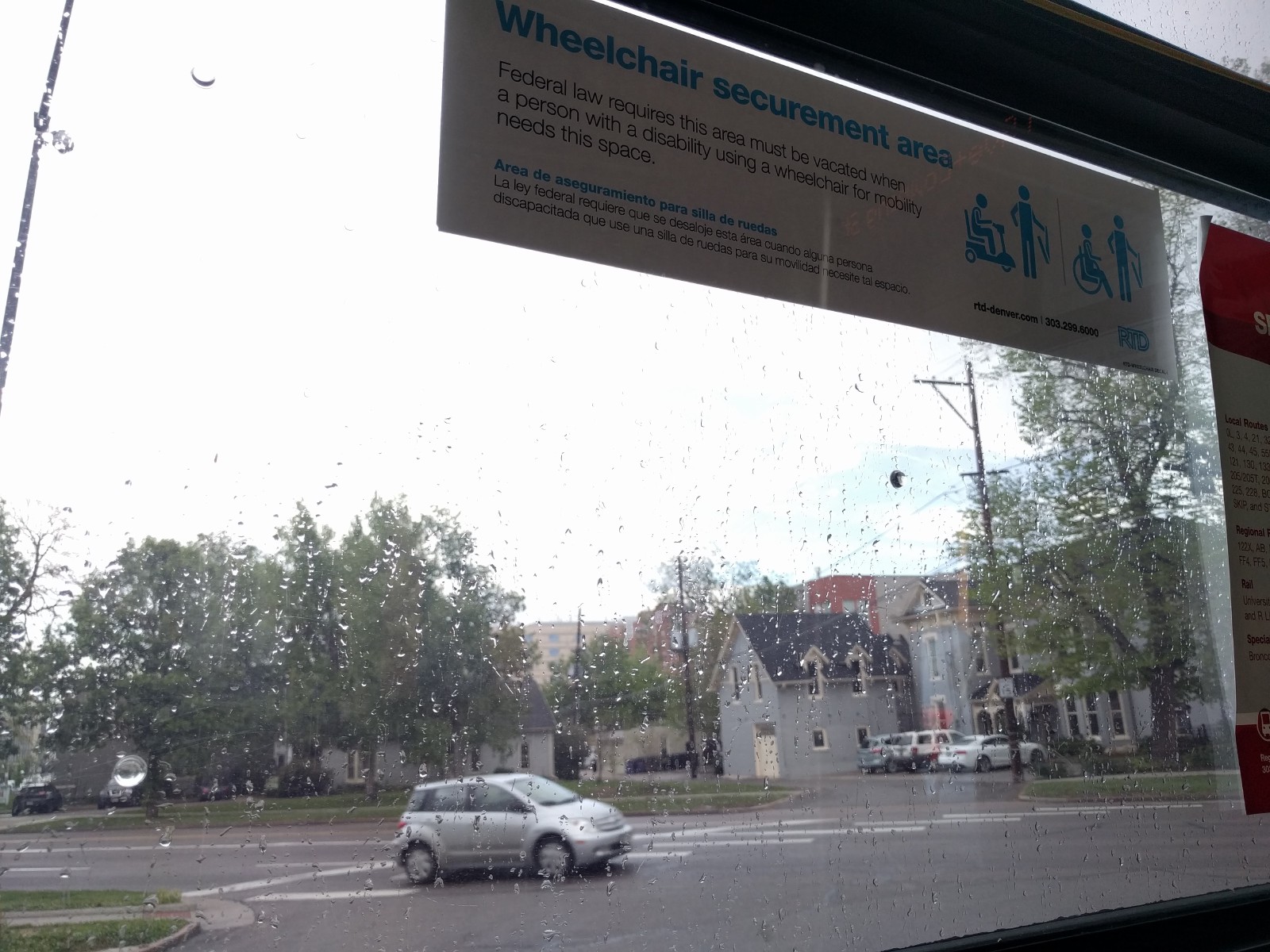Casual Ableism
In order to help you best understand the past few weeks, we begin this post listening in on a recent conversation with my neurologist.
“Can you stand?” “Yes, but only for a minute or two, maximum,” I replied, his furrowed brow telling me all I needed to know. “Are your legs really that weak?” I quickly retorted. “If you’ll look at the chart, the purpose of this visit is to investigate possible small fiber neuropathy in all four limbs, plus muscle weakness and numbness in my lower extremities.”
I’m no longer surprised by how quickly medical staff dismiss potentially valuable information, but this office set new records. By this point, the staff had already turned down MRI data I asked them to retrieve, and I was quickly realizing how little the physician himself cared for my perspective.
Soon, it became obvious that I’d need to stand, but I didn’t expect to push well beyond my limit, complaining as the room became blurry and I collapsed into my wheelchair.
Inside the office of a healer should be the safest space for a rare, chronic illness patient such as myself. And yet, ableism has permeated our culture to a point where it becomes just another venue for abuse.
Hello. If you’re new to my blog, welcome. I’m Nicholas Young, a technologist from Denver, Colorado. In October of 2015 I was diagnosed with a rare genetic illness, Ehlers Danlos Syndrome. EDS itself affects my skin, joint cartilage, blood vessels — anything that is made of collagen, whether in whole or part. My joints are excessively lax and subluxate or disclocate easily, making it structurally difficult to stand, let alone walk.
But even if my bones could stay in place, I fatigue quickly and need to sit within a few minutes in order to curb intense vertigo. My knees and ankles occasionally catch and lock when in motion, adding to my fall risk.
As a patient with a rare condition, life often passes in flashes: rapid-fire memories of doctors appointments, each with it’s own flurry of activity, whether the effort helps your condition or not. It’s a rote dance that most medical practitioners surrender to early on; while as the patient, you’re left to quietly go through the motions. There are days when even a great appointment with my preferred physician leaves me depressed: not for what happened during my visit, but that I once again have more questions than answers. Looking back, I can certainly say the past few weeks are a tepid mix of positive reinforcement and outright degredation.
I realized I’ll always have more questions than answers.
This post was intended for publication on May 30, neatly conluding Ehlers-Danlos Syndrome Awareness Month, but was significantly delayed when I encounted a nasty bout of unexpected, disruptive ableism.
Every year during the month of May, Zebras from around the world join forces to shine a light on the often unthinkable symptoms caused by thie pervasive connective tissue disorder. Passion was already running high this year (thanks to politics and a whole host of other contributing factors) so I planned several articles. What I could not foresee was that I would put down my crutches in favor of a wheelchair also during the month of May. I knew my lower extremeties were weak and uncoordinated, but I din’t expect to need mobility assistance so badly. I’m a realist though, and as my condition changes, so do my needs. As my needs change, I must write; if not for myself, for the others who are trapped in their own failing, pain-racked bodies and cannot.
Life on Four Wheels
On Monday, May 22, shortly after I published a list of concerns I wish readers understood concerning how I live with chronic illness, my rental wheelchair arrived on our doorstep. For the first time in over a year, I travelled to the store and shopped for a pair of new slacks, while reveling in how otherwise difficult (or impossible) tasks were made accessible (even magical) by my new mobility device. Even more surprising, I found myself volunteering to run small family errands that were impossible even when I could walk without aids. I told my wife to take her planned out-of-state trip, because I wouldn’t be falling regularly.
Thanks to a community of wheelchair- using YouTubers, it only took me 24 hours to glimpse how I would work, play, and live on four wheels. I hadn’t considered using the chair at home so often, but during my evaluation for a custom-fit chair, my new-and-improved physical therapy team recommended it until my stability and body awareness improves.
The excitement being able to attend meetups with reduced pain and travel safely to and from my many doctors appointments without fear of further injury is indescribable. Never again will I be denied a seat on a crowded bus because my impairment isn’t visible until I hit the ground.
Since December, I have used a pair of forearm crutches to take the weight off my bad leg and prevent falls. Unfortunately, they were only minimally useful. My wrists and hands can’t bear the weight required to effectively stabilize myself. It’s also suspected that I have Postural Orthostatic Tachycardia Syndrome (POTS), a form of dysautonomia that contributes to my instability and vision blurriness when standing. This, friends, is the second of many significant comorbidities that I live with, and it illustrates my most terrifying fear about life with a connective tissue disorder: any part of my body can fail, at any time, and without warning.
The chair functions as a support for my unpredictable body, diffuses a significant portion of the daily musculoskeletical pain, and telegraphs my formerly invisible disability to the world. But while my wheelchair has prompted a certain class of individuals to step in and assist when necessary, it has also invited much unwanted attention.
Hazards of Visibility
The scariest thing I’ve yet to face as my body degrades is a lack of intellectual autonomy. Everyone seems to be an expert on disability except the disabled. Functionally, this means every time I comment issues of accessability in public, I become awkwardly entangled.
After I received my rental wheelchair, my perspective on the world shifted in a very physical sense — standing, I last measured over six-feet — but in the chair, I see the world from a reduced height. I’m relating to normal objects very differently, pushing up to the counter and locking my brakes rather than grotesquely dragging my body with crutches to the nearest chair, only hoping I could make it before the dizziness and disorientation took over.
I told my wheelchair supplier to design a chair capable of traveling worldwide with me as I begin another season of speaking on the conference circuit. I enjoy sharing knowledge, and my new series of talks will focus on my expanding universe as a technologist who is becoming physically disabled. I hope you’ll join me somewhere on the road. Simultaneously, I’m slowly realizing how inaccessible many spaces are, especially, it seems, many spaces where meet-ups or conferences are held. Gophercon is known as a standout among events for it’s attention to detail, having provided professional real-time captioning services for talks presented at the 2016 conference. Conferences are catching up to broadcast accessiblity standards, but there is still much more to be done.
Sitting with these thoughts as my Twitter feed scrolled by, I commented on this short video of a conference instructor leading the audience in a moment of vigorous group exercise:
“I’m pondering how I would feel in this event as a person with physical disability.”
If you’re looking for a case study to underpin my earlier assertion (everyone seems to be an expert on disablity except the disabled), observe closely. In response to my question, I quickly receive the obviously hilarious response, “probably relieved they didn’t have to participate.” I should’ve thanked my conversation partner for the opportunity to place ableist elitism on clear display, because never have I experienced an example in the real world that has been documented so well.
A few days prior, I requested that a gentlemen refrain from using slurs for the mentally disabled to describe his frustration in the grocery store. He extrapolated the fact that I’m in a wheelchair, diagnosed me with developmental disabilities, and began apologizing repeatedly. An act of justice left me with a creepy older gentlemen patting my knee, trying to atone for something he clearly didn’t understand.
In the case of my Twitter exchange, I was told, “I thought you were asking about a hypothetical person.”
The disconnect is obvious. Anytime I speak on issues of access or disability, I become either the target for offenders’ apologies or the trademark “other” disabled individual — which ever is more convenient and padding to their ego. This has to stop, because it sweeps away realities of the disabled, substituting them for a momentary positive feeling. Individuals of all genders are capable of these ableist attitudes, so understand that while we’re working on to correct a problem with gender imbalance in my field, we must also put a stop to the ableist ideas that keep disabled contributors out of the fray.
I don’t have to earn my name in the technical field. If I’m finding it difficult to re-enter the workforce for disability concerns, can you imagine the challenge someone else, perhaps new to the industry, might face? As key companies focus more on output, how does this align with a productive strategy for someone with limited energy? I feel that we have a long way to go when it comes to accomidating the disabled, even for a field that isn’t physically demanding.
Where We Go From Here
I’ve been asked by friends, and even asked myself: what comes next? That chapter is still being written.
I’m waiting on a permanent wheelchair to be constructed for me in the woods of Washington, but the process is taking much longer than expected. Once it is completed, I’ll have the opportunity to work more effectively and travel more frequently. Extended local trips can be difficult with the rental wheelchair due to extra weight, an issue I’ve purposefully designed around by insisting the frame of my custom-fit chair be made of titanium. With any luck, it will arrive within the predicted three-to-six-month time-frame.
Ehlers-Danlos Syndrome is, for me, characterized by a multi-headed beast that seemingly appears whenever I have important tasks. If I decide to launch a new business venture? EDS appears and causes severe pain and fatigue. When traveling, I’ll lay down on an unfamiliar bed and dislocate one of my major weight bearing joints in my back. My chair is one more weapon that I can rely on, a protective measure that allows me to perform tasks of daily living. And I’ll need it, especially I’ve planned a medical vacation — a period of time where I don’t schedule or attend any doctors visits — very soon. It will help restore my mental health, but I must also support my body.
Writing three posts on the topic of chronic illness in such a short timespan has proved draining and infinitely more complex than I could’ve imagined. I hope that I’ve been able to introduce you to a slice of my reality.

